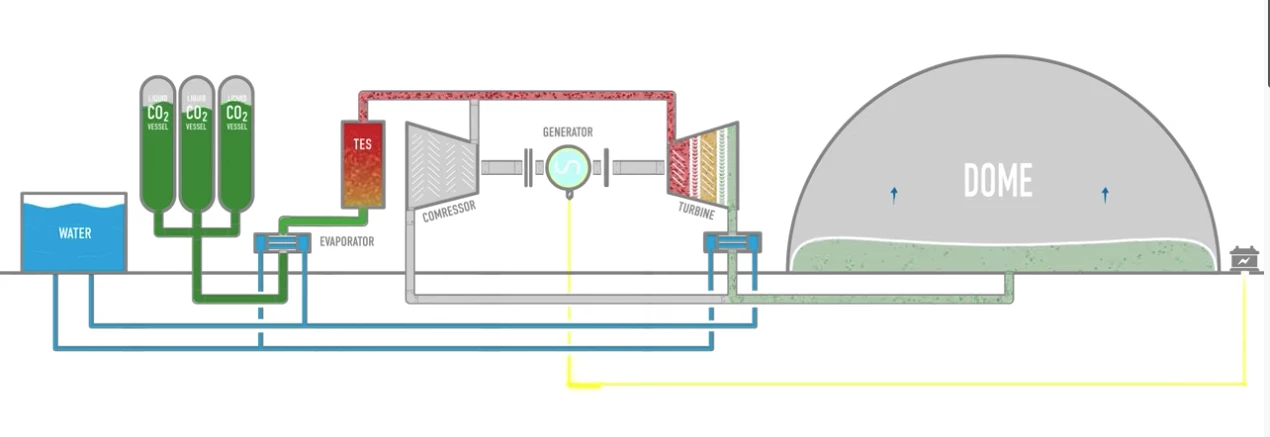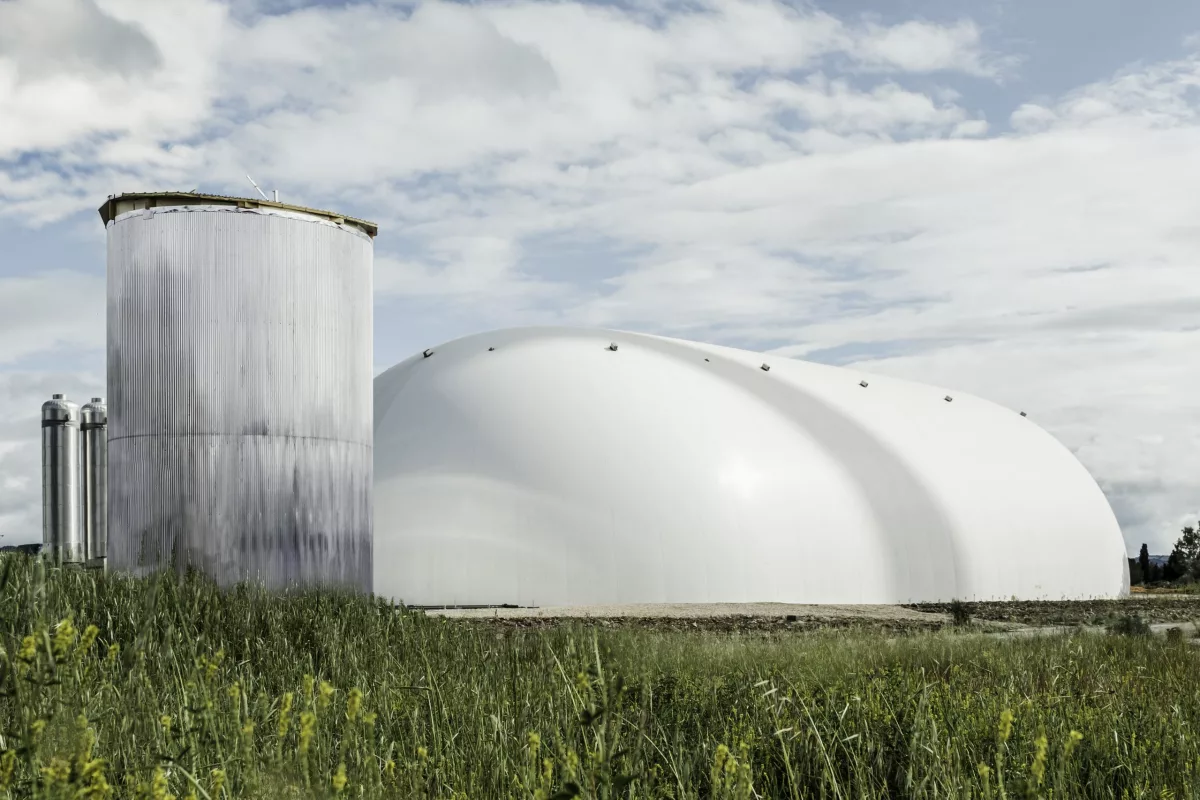Italian company Energy Dome has opened the first of its remarkable grid-level energy storage plants. These "CO2 batteries" can store renewable energy over long periods and release it quickly, at less than half the cost of big lithium batteries.
Large-scale energy storage is going to be required on an epic scale all round the world, as green energy begins to take over the world's power supply. Renewable energy is often generated at times and places where it's not needed, and a variety of grid-level storage technologies are jockeying for various energy market niches, each with their own strengths and weaknesses.
We took a close look at Energy Dome's CO2 battery technology last July, but here's the guts of it: carbon dioxide expands dramatically when it moves to a gaseous state from a liquid state, which it'll only settle in under pressures at least five times higher than the Earth's atmospheric pressure. How much does it expand? Well, at room temperature, 2.5675 litres of liquid CO2 kept at 56 atmospheres of pressure will expand into 1,000 litres of gaseous CO2. That's a factor of nearly 400.

Energy Dome's batteries use huge domes with giant, flexible bladders full of carbon dioxide gas in them. It "charges" its battery by using energy to run electric compressors that squeeze the gas into smaller and smaller volumes, eventually condensing it into a liquid, which is stored under pressure at ambient temperatures. This charging process creates waste heat, which is captured in a thermal energy storage system.
As long as the pressure is maintained, the carbon dioxide will happily sit there over the long term. When the energy is needed, the system uses its stored heat to evaporate the CO2, and a set of turbines harvests energy back out for the grid as the carbon dioxide expands back into the bladder dome (a term I can't separate from the idea of a four-hour Mad Max movie, no matter how hard I try.)
The round-trip efficiency of this solution, says Energy Dome, is over 75 percent. In this regard, it can't compete with big lithium batteries. But cost is king in the energy sector, and the company has told Recharge News its levelized cost of storage will be on the order of US$50-60 per MWh within a few years, much lower than the US$132-245 per MWh it costs to use lithium batteries.

There are solutions that'll store energy cheaper, but they're typically slower to react to demand and more appropriate for longer-term seasonal energy generation and demand mismatches, where these CO2 batteries can operate closer to the instant response of lithium batteries, while storing energy for longer with less system degradation.
And so to the pilot plant. The company announced last year, after forming as recently as February 2020, that it would build its first plant in Sardinia and have it running by 2022. And it has, with remarkable speed. The Sardinia plant is reasonably small, storing just 4 MWh of energy and offering a maximum output of 2.5 MWe, but the company says it proves the concept works, and that it was built using off-the-shelf equipment available anywhere in the world, demonstrating that there's really no impediments to large-scale global rollout.
Next up: a full-scale plant storing 200 MWh of energy and delivering up to 20 MWe when needed. Energy Dome says its first full-size plant is expected to be up and running before the end of 2023, that it's already sold plants in Italy, Germany, Africa and the Middle East, and that it's moving to Series B fundraising to help it scale up as the operation goes commercial.
Source: Energy Dome





